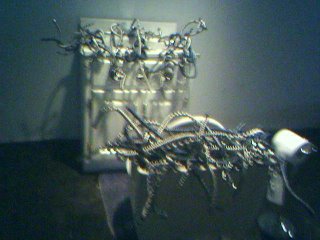Final Project -- Dupont Circle

A popular stop off the metro, Maggie and I went to Dupont circle to take in the sights and try and capture the many different facets of this site.

The essay "Is there love in the Telematic embrace?" by Roy Ascott discusses quite poetically the importance of messaging in the development of new telematic art. When armed with tools that allow for the wide ranging connectivity such as networks and the internet, it is easy to lose vision of what this tool can create. Any man with strong arms, a hammer and a chisel can carve marble, it is only the Greats like Michelangelo that can sculpt a David. Telematic technology has redefined such stalwart arts such as cinema, music and writing. This is undeniably true, what seems a bit hazy is what new things has this technology created. How can innovators use technology to "support a whole new field of creative endeavor that is as radically unlike each of those established artistic genres as they are unlike each other." How can we use telematics to create a new object d'art. Once an established genre is created it seems like it would be going against the very thing that constitutes a telematic work of art a telematic work of art. To create an establishment would be eliminating the very anarchic beauty of telematics.
 The exhibit at the Flashpoint Gallery in Washington, DC featured the show Moti/on "artists exploring interactive media." The show featured works that explored the different ways we use and can use technology to interact. In the Exhibit there were different works that toyed with the concepts of remote control, amplification of sound, and internet searches. One of the pieces that I found to be extremely interesting was "The Sent Project," By Benjamin Domiminica, Samuel Ortiz, et al.
The exhibit at the Flashpoint Gallery in Washington, DC featured the show Moti/on "artists exploring interactive media." The show featured works that explored the different ways we use and can use technology to interact. In the Exhibit there were different works that toyed with the concepts of remote control, amplification of sound, and internet searches. One of the pieces that I found to be extremely interesting was "The Sent Project," By Benjamin Domiminica, Samuel Ortiz, et al.It is not the technology that they outline in the essay, "Welcome to the Electronic Cafe International" by Kit Galloway and Sherrie Rabinowitz, that is all that remarkable. It is the depth of insight of the importance of the arts/humanities in shaping a collaborative space which "spans distance, language, values and culture."